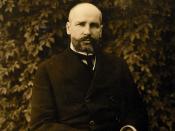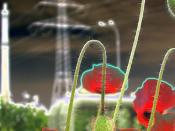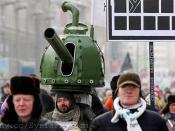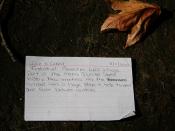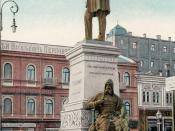EVALUATION OF THE AGRICULTURAL, POLITICAL, INDUSTRIAL AND MILITARY DEVELOPMENTS IN RUSSIA 1906-1913 The agricultural, political, industrial and military situation in Russia during years 1906-1913 had to over cope with huge reforms and developments.
Agriculture was in very bad stage due to the backward farming. This often caused famines and food shortages. The political situation was changing very quickly due to the Government problems, the Tsar was an absolute ruler. Others wanted to share the power. Russian industry was undergoing great changes. An industrial revolution was happening. After the disaster war with Japan there was a navy plan which would have made Russia the third world greatest naval power in the world by 1931. All of this led to certain changes in the regime that was used.
A new chief minister Stolypin planned important changes in the countryside. He wanted to prevent another revolution carried out by peasants and he wanted to turn Russia into modern industrial country.
For this to happen Russia would had to be more efficient to produce the extra food for the increasing numbers of industrial workers. In 1906 he introduced measures which allowed peasants to leave the mir. The mir operated a system like England in the Middle Ages.
Every village had a number of fields which were divided into long thin strips. Each family would have at least one strip in each field so that everyone got a share of the best and the worst land. However, this system was very inefficient, because of the following facts. A lot of time was wasted by travelling between the stripes. Also all farmers didn't like the idea of growing the same crop in each field.. The small field area of the stripes didn't encourage an ambitions of peasants to buy machinery. The old techniques were used, mostly the wooden plough. Only few animals were kept, so without manure to fertilize the crop the mir used a rotation system. Stolypin hoped that if peasants left the mir they would buy the stripes around them and create efficient modern farms which would produce more food per hectare. Furthermore, these rich peasants or kulaks would want to spend their new wealth on consumer goods which would then stimulate Russian industrial production. He also thought that the kulaks would be thankful that Tsar allowed them to became wealthy, and that in return, they would support him. In 1911 he was assassinated and the new minister didn't support his Stolypin's ideas.
In the October manifesto the Tsar had won the support of many liberals with his promise of an elected parliament or Duma. Therefore elections were held and in 1906 the Duma met for the first time. Now, the Tsar was not willing to allow the Duma to have any real power. Duma could only consider laws which the Tsar suggested. He could reject anything that the Duma had decided. It is hardly surprising that after his statement that he needs the Duma for advising him, he ended them. However the Tsar needed Duma, not simply to alliance with Britain and France, and these two countries preferred Russia to have an elected parliament, just as they had. Therefore the third Duma met. This time Stolypin changed the rules for voting, so that most peasants and industrial workers could not vote. This produced a Duma made up mainly of people who supported the Tsar. As a result, it lasted for five years, from 1907 until 1912.
Russia had made dramatic developments in modern industry in the late ninetieth century. However, there was a price to pay. Rapid industrialization produced a middle class bourgeoisie who had no say in how the country was ruled and a proletariat who were forced to live and work in appalling conditions. The policy designed to make Russia successful also produced much of the discontent which led to the revolution in 1905. While the Tsar and prime minister hoped to buy the support of the bourgeoisie through the creation of the Duma, nothing was done to improve the conditions of industrial workers. The people were working for long hours in dirty and dangerous factories they wanted change.
Military development in Russia during the years 1906-1913 was needed. After the naval disaster in 1905 in the war with Japan of the three squadrons which made up the Russian navy, two had been completely destroyed and the other had mutinied. Weak leadership was blamed. Far more power was given to the naval minister who worked closely with Duma. Together they drew up a plan to build modern battleship which would have made Russia the third Greatest naval power in the whole world by 1931. However, Russia lacked the money to do this more quickly at a time that two other great powers, Britain and Germany, were engaged in a naval arms race which was producing huge battleships known as dreadnoughts.
The total situation in Russia at the end of 1913 was terrible. The industrial workers were making far more strikes than ever before, from 1910-1913 the number of strikes was 10 times bigger than in 1910. The political situation could not be controlled. The Dumas had no rights at all. The agricultural ideas how to improve the agriculture ended by Stolypin's assassination. Military situation was also bad because of the lack of the money and weak and unorganized leadership. Tsar and his ministers were leading Russia to disaster, change was needed!
